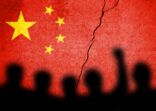The optimism prevails despite geopolitical risks, particularly the risk of war in Ukraine. Developed markets are also delivering downbeat news. Japan reported a 6.8% contraction in second quarter GDP, the largest drop since 2011. In the US, retail sales slowed during the same period and Europe’s GDP was flat in the second quarter compared with the first.
Patrice Lemonnier, head of emerging markets equities, Amundi said: “A key dilemma with emerging markets is despite their challenges, they are performing this year and trading at good valuations relative to that offered in developed markets.”
“Developed markets are trading on an average at 15 times the price-to-earnings multiple for next year while GEM [global emerging markets] is only at 10 times. So there is a 33% discount compared to developed markets, which is very large.”
“If you look at price-to-book in emerging markets, it is at an all-time low, if we exclude the lowest point reached during the Asian [currency] crisis of 1998. Both in terms of relative and absolute value, emerging markets look attractive.”
In Asia, managers see opportunities unfolding in India, Thailand and the Philippines and in Latin America, Mexico, Peru and Brazil.
As regards the Northeast Asian countries, fund managers such as Jorry Rask Nøddekær, lead portfolio manager of the Nordea 1 – Emerging Stars Equity Fund, like the Chinese technology sector, specifically internet companies, as well as the technology sector in Taiwan.
Bullish on Modi
India has clearly come on managers’ radar as they expect the new government to carry out reforms in key areas and seek to boost the manufacturing space.
“We expect many things to happen in India in terms of reforms to unleash investments,” Lemonnier told Fund Selector Asia. “We expect the government to gradually reduce the subsidies and make fiscal policy more efficient. We also expect the central bank to gradually taper inflationary expectations.”
In India, he is overweight in industrial, consumer discretionary, technology and private banks, and is “looking actively” at opportunities in materials companies.
Echoing similar views is Nøddekær who said he “very keen” on India due to “Modinomics.”
“We still believe we really have a sweet spot where you get high economic growth coming back, some of the bottlenecks in the economy disappearing, and a significant chance that the interest rate environment will turn low in next three-four years. Lot of companies will benefit from this,” Noddekaer said.
“Industrial companies would get the initial benefits. We are positioning much into interest rate sensitive sectors like banks, financials, property and consumer discretionary,” he added.
Financial sector attraction
Fund managers seem to be attracted to the financial sector in much of Asia. Thailand, which has seen a stabilization of the political situation, is an example.
“In Thailand, we are much concentrated in financials like banks, where we find value and also in material sectors including construction and cement companies,” Lemonnier said.
Nøddekær adds that the Philippines is improving the most of all emerging markets, “with a combination of underlying growth, increasing consumption, and fall in interest rates from historical levels.”
“The Philippines is mainly a growth story. The credit-to-GDP ratio is not that high, so there is an opportunity to grow and we like financials, especially banks that are very liquid.”
















